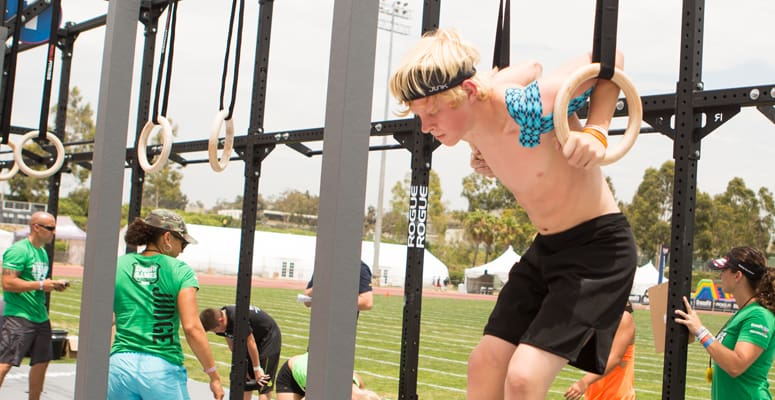COACHING TEENS IN THE SPORT OF FITNESS
I just got off a call with a young teen and her mother who were inquiring about a training plan that would help the young athlete reach her goal. The goal is to compete in the CrossFit Games in the 14-15 age division. Within 5 minutes of the conversation I discovered the young teen was training over 30 hours per week doing CrossFit classes, gymnastics workouts and whatever else she could muster up in the home gym. I then asked her if she could do a strict pull up…she said “maybe one, but I can kip”.
I then proceeded to ask what she believed would get her to the CrossFit Games, she said training more and getting muscle ups ”. As I began to break down what training for the Games would look like in terms of strength training, rest days and sleep over 8 hours per night, I could see both of them look back at me as if they were learning a new language.
As a coach I get these calls often from parents and athletes looking to improve. The problem though is the lack of education in most CrossFit boxes who are working with families and youth who are showing up to their 6 am classes.
This is not a “dis” on CrossFit boxes and/or coaches of these boxes, it’s the reality of what is being offered; group fitness, fun, team work, high fives and community! For most youth in CrossFit, that’s were it starts ; mom and dad’s group class! What they can’t do, they just scale and what they can do, they just do more of. So what if they want to be a CrossFit athlete, now what?
Coaches, parents and young athletes can get caught up in early success of their young teen in CrossFit.
“Mom I got a Bar Muscle up!
“Dad I Dead-lifted over 200lbs!”
It’s exciting to see your child or young person in the gym succeed!
But all that success can be short lived without a training plan that has “progression with purpose.”
Individual needs for teen CrossFit athletes are determined by where they sit on the developmental continuum. Faster excelling athletes will sit further down this continuum and seemingly be able to “do more” in the gym. This is where solid training principles in strength and conditioning are essential.
Training should begin with a periodization model to maximize training stimulus and promote recovery.
This type of planning and progression will help avoid burnout and overuse injuries by the age of 17-18 years old.
Where to Start
Assess Don’t Guess
— Need to know where they sit? Measure performance markers that provide clear feedback on where they sit in physical and mental maturation. Not all teens mature and develop the same! Assessment will determine the plan for the long road!
Skill Development and Acquisition
— Implement coordination and agility drills that include: lateral movement, jumping, throwing, running and rotational movement.
Strength Development
— Start with SOLID mechanics for pushing, pulling, squatting; start with volume (muscle endurance) then add intensity (load) as the teen shows confidence in movement → make it challenging BUT DO NO HARM.
Gymnastic Skills
— Start with core drills then move to extremities.
— Develop upper body strength and endurance with body weight movement in pushing and pulling→ no dynamic movement until strength in upper body is developed.
(Coach Lyons Tip: 8-12 strict pull ups is my rule of thumb before kipping or Chest To bar pull ups are introduced.)
CrossFit
–Higher skill movements (MU, CJ, Snatch, HSPU etc.) are earned: body building practice for upper and lower development is key #PayTheMan first before jumping into the workout “AMANDA”
— High intensity training: young athletes need to understand the energy systems used so they can identify fatigue, eat the right foods and know how to maximize a training session. Its not ALL OUT, ALL THE TIME! Coach and athlete need to work closely so efforts can be managed and understood.
(Coach Lyons Tip: Teen athletes should know the difference between an aerobic vs anaerobic session, and what both feel like and do for their development)
Mental
— Not all progression is going to look linear, there will be highs and lows but that is part of the journey, Keep it fun, improving the averages over the season!
–Give positive reinforcement with clear and honest feedback for optimal skill development.
— Educate the teen athlete. An empowered, independent athlete will have more “training intelligence.”
Teach training theory and purpose, technique, nutrition, and mental skills. These are fundamental tools to understand if the teen plans to compete at elite level.
CrossFit® is a registered trademark of CrossFit, Inc. OPEX Fitness’s uses of the CrossFit® mark are not endorsed by nor approved by CrossFit, Inc., and OPEX Fitness is in no way affiliated with nor endorsed by CrossFit, Inc.



